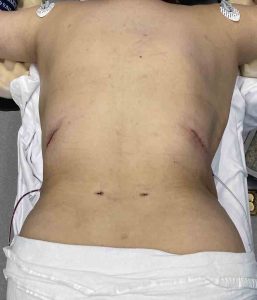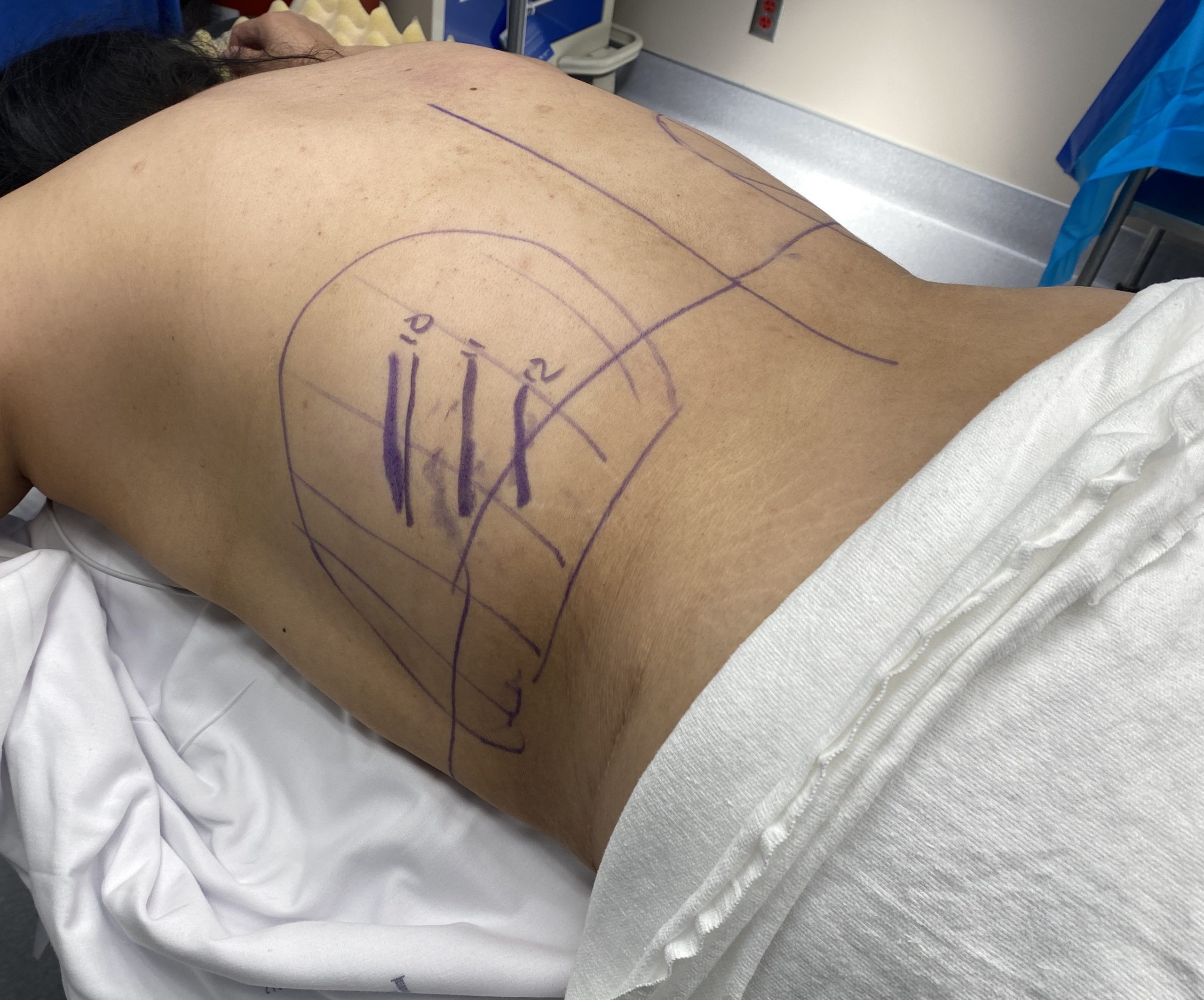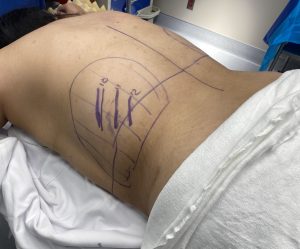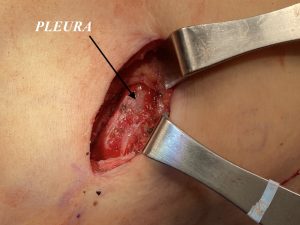Background: One of the considerations in rib removal surgery is the location of the lung. Anatomically they extend from just above the clavicle down to the 6th rib in the front and the 10th rib in the back…which is where we are most interested in rib removal surgery. It is also relevant to note that the pleura, the lining of the lung, extends down lower than that of the lower lobe of the lung. Since the pleura is adhered to the internal surface of the thoracic wall, its larger size allows for the lung to expand downward with inspiration. Thus the pleura is the fixed lining that maintains the intrathoracic space while the lung is the mobile internal tissue.
In rib removal surgery, which is done potentially on the lower three ribs, the location of the pleura is important. One of the main risks of such surgery is violation of the pleura which can potentially cause a pneumothorax. (collapsed lung) While I have never had such a complication being aware of where the pleura resides and knowing how to avoid it is the reason why.
The pleura does not sit as low as rib #12 and is often stated to be at around the level of rib #10. My many rib removal surgeries do confirm that it can often be seen behind rib #10. But occasionally it can be seen lower at rib #11. This more uncommon location means that one should always be on the lookout for it as it could be this low. The relevance of this occurrence is that since seen at rib #11, rib #10 is not then going to be removed as the risk of pleural violation is not worth it.
Case Study: This female had a prior history of 360 liposuction (BBL surgery) and a tummy tuck. She desired further effort at waistline reduction./narrowing. She was short in stature with a wider torso.



Case Highlights:
1) The pleura is the lining of the lung that extends onto the lower ribs and is the most important anatomic structure to be avoided in rib removal surgery.
2) The risk of encountering the pleura is typically around rib #10 but infrequently can be seen behind rib #11.
3) Because the pleura is attached to the internal thoracic wall the risk of its violation is greatest at rib #10…which can make for an intraoperative decision to leave rib #10 intact.
Dr. Barry Eppley
Indianapolis, Indiana






